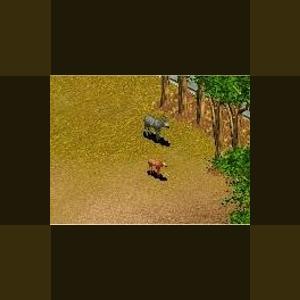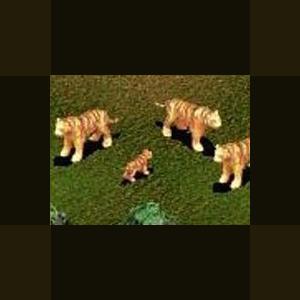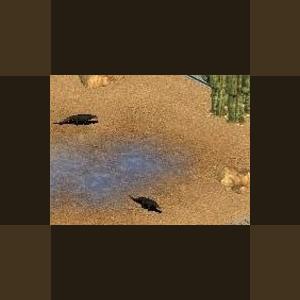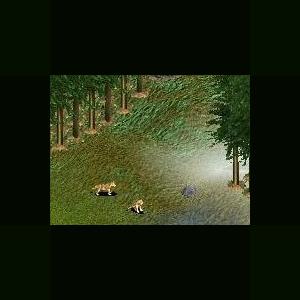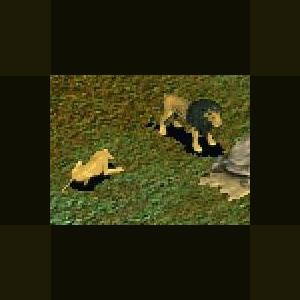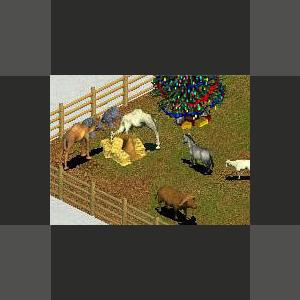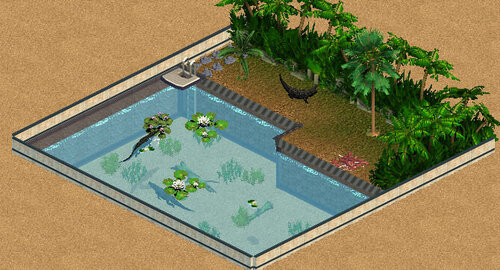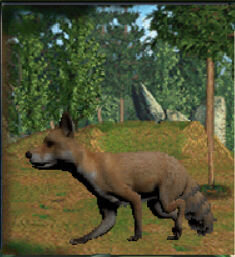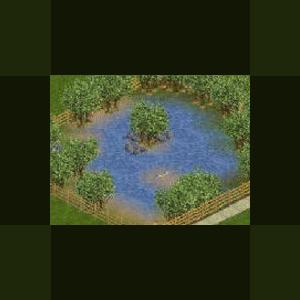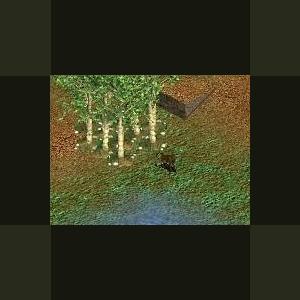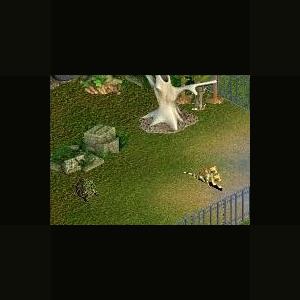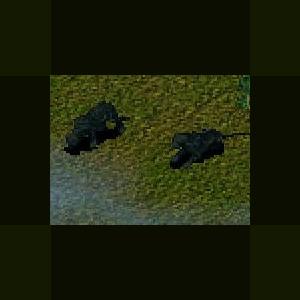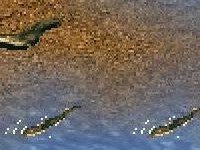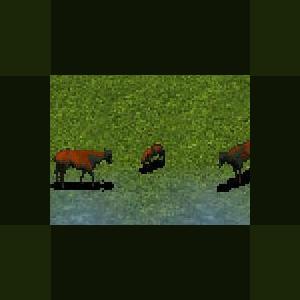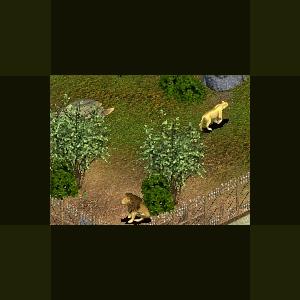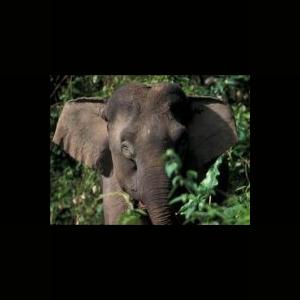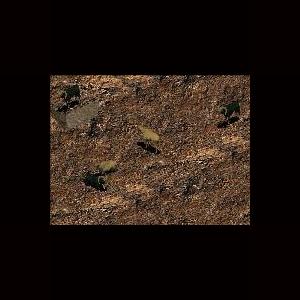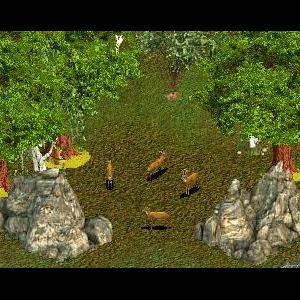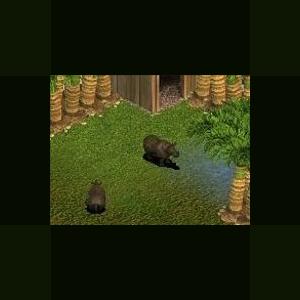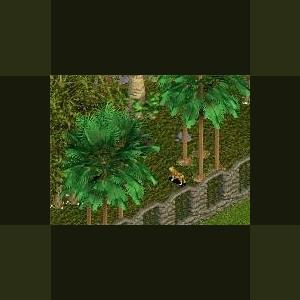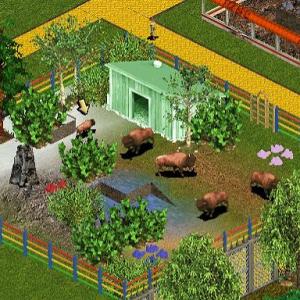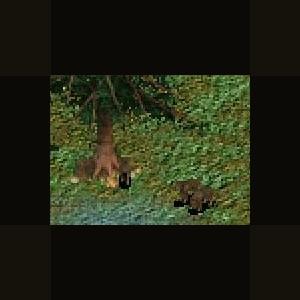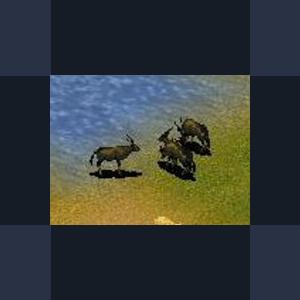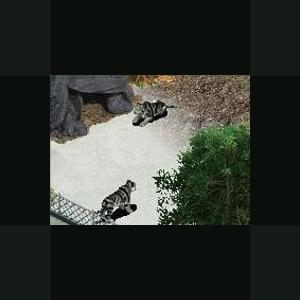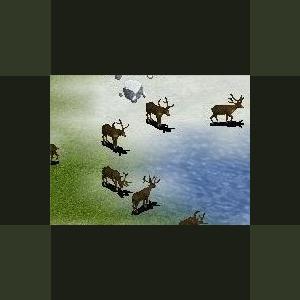279 files
-
Lesser Kudu by Ghirin
By Guest
Lesser Kudu by Ghirin
The lesser kudu (Tragelaphus imberbis) is large antelope found in East Africa. Males and females are dimorphic. The males have grey-brown coats while females have reddish chestnut coats. They prefer areas of dry forest and thornbush.
References:
www.wikipedia.org
www.ultimateungulate.com
*Inspired by the Zoo Tycoon Brains Trust at the Zoo Tycoon Forums*
Updated 2010-11-03
Just to save space with less in zip and smaller image.
Nothing new.
392 downloads
0 comments
Updated
-
Golden Tabby Tiger by Moondawg
By Guest
Golden Tabby Tiger
The Golden Tabby Tiger or Golden Tiger is an extremely rare colour variation caused by a recessive gene and now found only in captive tigers. Like the white tiger it is a colour form and not a separate species. It is sometimes referred to as the strawberry tiger due to the strawberry blonde coloration. No official name has been designated for the color.
The Golden Tabby Tiger or Golden Tiger is an extremely rare colour variation caused by a recessive gene and is currently only found only in captive tigers. Like the white tiger, it is a colour form and not a separate species. In the case of the golden tabby, this is the wide band gene; while the white tiger is due to the color inhibitor (chinchilla) gene. There are currently believed to be less than 30 of these rare tigers in the world, but many more carriers of the gene.
While no official name has been designated for the color, it is sometimes referred to as the strawberry tiger due to the strawberry blonde coloration. he golden tabby's white coat and gold patches make it stand out from the norm. Their striping is much paler than usual and may fade into spots or large prominent patches. Golden tabby tigers also tend to be larger and, due to the effect of the gene on the hair shaft, have softer fur than their orange relatives.
Like their white cousins ,all golden tabby tigers have mainly Bengal parentage, but are genetically polluted with the genes of the Amur tiger via a part-Amur white tiger called Tony, who is a common ancestor of almost all white tigers in North America. The suggestion that this coloration is caused through the deliberate breeding of Amur tigers with Bengal tigers is a popular myth founded on this fact. All golden tabbies appear traceable to one of Tony's male descendents, Bhim.
India has records of wild golden tigers which date back as far as the early 1900s. There have been suggestions that the tendency for this coloration gradually developed in a small group of tigers living in an area of heavy clay concentration. The unusual color would provide these tigers with extra camouflage. The theory remains unproven, however, inbreeding of a small isolated group of tigers could cause the recessive golden tabby gene to emerge if at least one of those tigers carried the recessive gene for the golden color and bred with its own offspring (as has happened in captivity).
Golden tigers and stripeless or nearly stripeless tigers may occur in the same litter. This is due to the effect of the wide band gene on the normal orange colour and the white colour respectively. The wide band mutation is not found solely in white tigers and may also be carried by normal coloured tigers, however carriers of the wide band gene are probably no longer found in the wild. Wild-born golden tabby tigers might be disadvantaged as they are less well camouflaged than normal orange tigers. The last known wild Golden Tabby tigers were shot outside of Mysore Padesh, India in the early 20th century. But there are just under 30 left in captivity.
Few zoos have bred or exhibited golden tabby tigers and many have no knowledge of the color or its mode of inheritance. It therefore usually appears by accident when breeding orange and white tigers together rather than through planning. As white tigers and heterozygous normal coloured tigers are traded and loaned between zoos and circuses for breeding, if they also carry the wide band gene, that gene becomes widespread. When their descendants are mated together, the golden tabby colour is passed on to the offspring if both parents are gene carriers. Unless golden tabby cubs are born, the zoos may have no idea that the parents carry that gene.
The first golden tiger cub born in captivity was in 1983 and this came from standard-colored Bengal tigers, both of whom carried the recessive genes for both the golden tabby and white colours. It was born at Dr. Josip Marcan's Adriatic Animal Attractions in Deland, Florida.
An example of a Golden Tabby is in Dream World in Australia. Samara, a normal orange tigress, had been mated with nearly-stripeless white male, Mohan. Her litter included one normal orange cub (Sultan), the first white tiger born in Australia (Taj, also nearly stripeless), and the first two tabby-colored tigers (male Rama and female Sita) born in Australia. The cubs weighed around 1.5 kilograms and measured approximately 30 centimeters in length. They were removed from their mother soon after birth and hand raised. The births and hand-raising process were filmed and presented in an hour long documentary. Golden tabby Sita will be mated to an unrelated normal orange tiger called Kato.
Diamond, a male golden tiger, is housed at the Isle of Wight Zoo in the UK. Because he is inseparable from his normal coloured sister, who also carries the golden gene, Diamond was castrated to prevent inbreeding. Longleat Safari Park in the UK also has a golden tiger. Glasgow Zoo's golden tiger, Butu (also spelled Bhutto), obtained from Longleat, went to Germany when Glasgow Zoo closed. Longleat previously had an elderly golden tiger named Sonar, but he passed away in 2006.
A few Golden Tabby's are also found at Six Flags Great Adventure in Jackson, New Jersey: A male, Kingda Ka, who has a roller coaster named after him, and a few others who make up the family that appears in daily educational award-winning shows about these specific tigers.
Though golden tabby tigers are not deliberately bred for by conservation-minded zoos, they have joined the white tiger in becoming popular for use in stage shows and similar events. A few private breeders are attempting to produce golden tabby tigers alongside white tigers to meet demand. The golden tabby tiger and the white tiger could therefore be regarded as human-perpetuated "breeds", however, some zoos and wildlife parks refer to both golden tigers and white tigers as endangered.
Litters of different colored cubs are not unusual because the white and golden tabby colours are caused by combinations of hidden recessive genes carried by the parents. White tigers, such as Dreamworld's Mohan (named after the white tiger captured in India in the 1950s), are highly inbred. Inbreeding reduces genetic variability and may cause hidden genes to manifest as there is a greater probability that two recessive genes will meet up.
Analysis of golden tabby tiger family trees shows that golden tabbies are genetically normal orange coloured tigers with the addition of a recessive modifiying gene, probably the wide band gene. This same wide band gene also gives rise to stripeless white tigers. A white tiger that inherits two copies of the recessive wide band gene will be a stripeless white. A normal orange tiger that inherits two copies of the recessive wide band gene will be a golden tabby. The wide band gene is carried independently of the white gene.
All golden tabby tigers seem traceable to a white tiger called Bhim, a white son of Tony. Bhim was a carrier of the wide band gene and transmitted this to some of his offspring. Bhim was bred to his sister Sumita (also a carrier of the wide band gene), giving rise to stripeless white tigers (i.e. having two copies of the wide band gene). Bhim was also bred to a normal orange tigress called Kimanthi, and then to his own orange daughter Indira from that mating. The mating of Bhim and Indira resulted in striped white, stripeless white, normal orange, and golden tabby offspring indicating that both Bhim and his daughter carried the wide band gene. When the golden tabby male offspring was mated to the normal orange female offspring, both golden tabby tigers and white tigers resulted.
At Dreamworld, Australia, it was demonstrated that the mating of a nearly stripeless white tiger to an orange tigress that carried both white and wide band genes would result in golden tabby offspring alongside nearly stripeless white and normal orange cubs.
Updated 2010-11-03
Just to save space with less in zip and smaller image.
Nothing new
404 downloads
0 comments
Updated
-
Mexican Beaded Lizard by Jordan
By Guest
The Mexican Beaded Lizard is a venomous reptile found in the deserts of Mexico and the southwestern USA.
Updated 2010-11-03
Just to save space with less in zip and smaller image.
Nothing new.
463 downloads
0 comments
Updated
-
Nordic Lynx by Jordan
By Guest
Nordic Lynx by Jordan
Made by Jordan and dedicated to Jane
Updated 2010-11-04
Just to save space with less in zip and smaller image.
Nothing new.
450 downloads
Updated
-
Barbary Lion by Ghirin
By Guest
Barbary Lion by Ghirin
The Barbary lion (also known as the Atlas Lion) was among the largest of all lions. Its scientific name, Panthera leo leo, means that this lion was used as the original type that all other lions were judged by. One of its best known features, the huge shaggy mane of the male, was dark and could extend halfway down the back and formed a characteristic fringe of belly fur. The lion was also described as having a “dusky ochery” color.
Barbary lions once roamed all of the coniferous forests of North Africa. They were heavily hunted by the ancient Romans for the arena. Continued hunting, combined with habitat loss led to the extinction of the Barbary lion in the wild in 1922.
Some believe that Barbary lion genes might still exist in captive lion populations and the Barbary lion might be reconstructed through selective breeding.
References:
http://www.barbarylion.com/
The Doomsday Book of Animals by David Day, 1981
Created by Ghirin 2003
Updated 2010-10-30
Just to save space with less in zip and smaller image.
Nothing new.
549 downloads
0 comments
Updated
-
Christmas Animals Part 2 by Ghirin
By Guest
Christmas animals part 2
White dromedary camels are one of the color varieties of dromedary camels.
They enjoy the company of other Chritmas Petting Zoo animals.
Sheep are one of the most valuable animals in the Middle East,
providing humans with meat, wool, and milk.
White Sheep enjoy the company of other Christmas Petting Zoo animals.
Updated 2010-10-30
Just to save space with less in zip and smaller image.
Nothing new.
448 downloads
0 comments
Updated
-
Black Caiman by Khaydar
By Khaydar
Adopt a Black caiman (Melanosuchus niger) for your zoos.
Black Caiman description:
Minimum happiness needed for chance of breeding: 95.
Liked foliage:
Water Reed, Water Lily, Beach Grass (MM), Llala Palm Tree
Liked rock:
Large Rock, Small Rock - Medium, Small Rock - Small
Number of animals allowed per exhibit: 2-3 with 20 squares each.
A suitable exhibit for 2 of this animal has 40 squares containing terrain of:
26 Fresh Water, 4 Dirt, 10 Rainforest Floor
using 6 grid squares filled with 4 Llala Palm Tree most liked plant
and using 3 Small Rock - Small most liked rock.
Other liked items:
Tank Filter (MM)
Credits to Hendrix and Zerosvalmont for the model and meshes.
Made by Khaydar
248 downloads
- crocodilian
- living animal
- (and 1 more)
0 comments
Updated
-
Red Fox by Khaydar
By Khaydar
Adopt a Red Fox (Vulpes vulpes) for your zoos.
Red Fox description:
Minimum happiness needed for chance of breeding: 95.
Liked foliage:
Spruce Tree, Yellow Cedar Tree, Lodgepole Pine Tree, Maple Tree
Liked rock:
Large Rock, Small Rock - Medium, Small Rock - Small, Coniferous Forest Rock
Animal can jump.
Animal can climb cliff.
Number of animals allowed per exhibit: 1-3 with 35 squares each.
A suitable exhibit for 2 of this animal has 70 squares containing terrain of:
34 Deciduous Floor, 4 Fresh Water, 18 Grass, 14 Coniferous Floor
using 10 grid squares filled with 4 Spruce Tree most liked plant
and using 6 Small Rock - Small most liked rock.
Preferred shelter: Large Burrow.
Credits to Hendrix for the model and mesh
Made by Khaydar
252 downloads
- living animal
- canid
- (and 1 more)
Updated
-
Dragonfly by African Raptor
By Guest
Dragonfly is a kind of insect. It belongs to the Order Odonata and the Class Insecta. The family is True bugs. Given its large claw-like pinchers, the dragonfly is a predator and feeds on other organisms.
You can recognize a dragonfly nymph by its teardrop shaped abdomen. It also has very large eyes.
There are about 5,300 species of dragonflies around the world. It is an insect that has two pairs of thick and long wings.
It lives near fresh water (usually slow moving) and swamps. It spends its childhood in water. Dragonflies are not harmful to people, though are smart hunters. They can fly up to 60 mph and live for 2-5 years average.
For four years, dragonflies are in a young time when they live under the water. For one year they are an adult dragonfly.
Dragonflies have been around for 300 million years. In old prehistoric times dragonflies had wings that were over two feet wide.
Dragonflies can eat water insects as larvae, but as they grow older they eat tadpoles, small fish (really small fish), and even their own species.
Updated 2010-10-30
Just to save space with less in zip and smaller image.
Nothing new.
386 downloads
0 comments
Updated
-
Arunachal Macaque by Ghirin
By Guest
Arunachal Macaque by Ghirin
Arunachal macaques live at high elevations in the eastern Himalayas.
The Arunachal macaque (Macaca munzala) is the most recent primate to be described by science. It is native to the Arunachal Pradesh region of India in the eastern Himalayan region. This macaque prefers living in the deep forest, but will come out to raid crops.
*Inspired by the Zoo Tycoon Brains Trust at the Zoo Tek Forums.
Reference: http://www.ncf-india.org/
http://news.bbc.co.uk/1/hi/sci/tech/4101001.stm
Created by Ghirin 2005
Updated 2010-10-30
Just to save space with less in zip and smaller image.
Nothing new.
377 downloads
0 comments
Updated
-
Ocelot by Kiger Cowgirl
By Guest
Ocelot by Kiger Cowgirl
This small cat from the Americas is endangered due to hunting for it's beautiful spotted coat.
The ocelot (Leopardus pardalis) is a small, spotted cat that ranges from northern Argentina up through the southernmost parts of Texas. They live in a wide variety of habitats including rainforests, montane forests, thick brush, semi-deserts, and coastal marshes.
Updated 2010-11-05
Just to save space with less in zip and smaller image.
Nothing new.
503 downloads
0 comments
Updated
-
Black Jaguar by Ghirin
By Guest
Black Jaguar
Author: Ghirin
Jaguars, like leopards, have a melanistic form. In these jaguars, the light-colored fur between and inside the rosettes is dark. Even though the coat may look solid black from a distance, the basic rosette pattern is still present and can often be seen when the animal is in angled light.
Black jaguars, like black leopards, are more common in the more densely forested parts of their range.
They are compatible with non-melanistic jaguars.
Created by Ghirin
Updated 2010-10-30
Just to save space with less in zip and smaller image.
511 downloads
Updated
-
Cuvier's Dwarf Caiman by Ghirin
By Guest
Cuvier's Dwarf Caiman by Ghirin
Cuvier's dwarf caiman (Paleosuchus palpebrosus) is the smallest living species of crocodillian.
It is known for its heavily ossified armor.
References:
www.wikipedia.com
http://www.flmnh.ufl.edu/cnhc/csl.html
Updated 2010-10-30
Just to save space with less in zip and smaller image.
Nothing new.
Updated August 18, 2018 by Cricket so that screenshot would show up again.
435 downloads
0 comments
Updated
-
Barbados Blackbelly Sheep by Ghirin
By Guest
Barbados Blackbelly Sheep by Ghirin
The Barbados Blackbelly sheep is one of the many breeds of hair sheep found in tropical areas of the world. Hair sheep, unlike the better known wool breeds, have very little or no fleece and are raised for the production of meat and leather.
The ancestors of the Barbados Blackbelly were brought to the island of Barbados in the 1600s. The breed is believed to be a combination of African hair sheep and European wool sheep and has become well adapted to the tropical environment of the West Indies.
The Barbados Blackbelly has a distinctive color pattern. They range in color from light tan to a dark mahogany red, with black breed markings on the face, legs, belly, inguinal region, chin, and chest. Both rams and ewes from Barbados are polled (hornless), though Blackbelly rams in the US may have horns.
This bred of sheep is very hardy and easy to keep. Females often give birth to 2 or more lambs at a time and usually have no problem producing enough milk for them.
The Barbados Blackbelly sheep is compatible with other breeds of hair sheep.
Created by Ghirin 2003
Updated 2010-10-30
Just to save space with less in zip and smaller image.
Nothing new.
458 downloads
0 comments
Updated
-
European Lion by Coolperson5
By Guest
The European lion (Panthera leo europaea or Panthera leo tartarica) could be an extinct subspecies of lion that inhabited southern Europe until historic times. This population is generally considered part of the Asiatic lion (Panthera leo persica), but others consider it a separate subspecies, the European lion (Panthera leo europaea). They also could possibly have been the last remnants of the Cave Lion (Panthera leo spelaea).Two prehistoric lions lived in Europe, namely the Early Middle Pleistocene European cave lion Panthera leo fossilis and the Upper Pleistocene European cave lion Panthera leo spelaea.The European lion in historic times inhabited the Iberian Peninsula, southern France, Italy and Balkans south to northern Greece.[2][citation needed] This was the northernmost of the subspecies of lion until its extinction. Its habitat was the Mediterranean and temperate forests of the area, with prey that included the wisent, elk, aurochs, deer and other European ungulates. Due to their remote extinction, little is known about these subspecies of lion. Aristotle and Herodotus wrote that lions were found in the Balkans in the middle of the first millennium BC. When Xerxes advanced through Macedon in 480 BC he encountered several lions.[3][4] Before 20 BC they became extinct from Italy and around the year 1 AD from Western Europe also.[5] Around the year 70 they were restricted to northern Greece, in the area between the rivers Aliakmon and Nestus. Finally, in the year 100 they became extinct in Eastern Europe too.[5] After that lions in the European continent became restricted to the Caucasus, where a population of the Asiatic lion survived until the 10th century.The European Lion became extinct due to excessive hunting (lion hunting was popular among the Greeks and Romans), over-exploitation, and competition with feral dogs. Along with the Barbary lion and the Asiatic lion the European lion was used in the Roman arenas, where they fought against bestiarii, and animals like the Caspian tiger, the aurochs and bears. Due to geographical distribution they were more accessible to Romans than North African and Middle Eastern lions. As the European lion became increasingly rare, Romans began to import lions from North Africa and the Middle East to fight in the arenas. Further details about their extinction are unknown.
Updated 2010-11-03
Just to save space with less in zip and smaller image.
Nothing new
356 downloads
0 comments
Updated
-
Bornean Elephant by Jordan
By Guest
Bornean Elephant
Author: Jordan
http://www.zoo-tek.com/forums/index.php?download=172
Borneo's elephants (Elephas maximus sumatrensis) (Payne et. al. 1985) represent an island population on the perimeter of the distributional range for Asian elephants in Southeast Asia. Their distribution corresponds to the Northeast Borneo Ecoregion of WWF classifications. They are thus likely to be genetically distinct, and may have developed other adaptations from the populations on the mainland and within the central areas of the species' range. Elephants only occur between the Sugut River in north-eastern Sabah and Sembakung River in northern East Kalimantan. Distinct anatomical differences from mainland elephants have prompted some taxonomists to give the Bornean elephant subspecies status (Davies, 1962; Payne et. al. 1985). Despite these differences, often rumoured but never studied, stories persist that Borneo's elephant population may have originated from domesticated elephants released by either the Sultan of Brunei or the Sultan of Sulu, and add a special twist to the mystique of these elephants. The peculiarly restricted distribution on Borneo, the lack of truly fossilised remains and the lack of indigenous names for the species elsewhere on the island, lend credence to this theory but do not confirm it.
Surveys in the early 1990s indicated that Borneo may then have had 1000+ elephants (Dawson, et al., 1996). Recent opportunistic reports indicate that today's population may be higher. There are indications that over the last 15-25 years the elephant population in Sabah has dramatically increased in some localities. Possible reasons are the squeezing and concentration of remaining elephant populations into smaller forest patches due to land use change, and the conversion of primary to secondary forest through commercial harvest of timber, with concomitant alterations of food supply and habitat conditions. However, Borneo's elephants are now coming under very strong extinction pressure. Large-scale conversion of secondary forests to oil palm plantations has begun, and is expected to dramatically increase in the next few years. While elephants do not necessarily require forest to be undisturbed, they do require large tracts of land with plenty of food sources. They readily feed in all kinds of agricultural areas and can cause significant conflicts in areas where their range is fragmented by agriculture. In Sabah, elephants still range over a large connected forest area. Only a few herds are isolated in fragmented, yet still relatively large, forest patches. However, there is a very real danger that the current forest fragments will soon be too small to contain viable populations, and that the large connected forest area will soon be fragmented as planned plantation schemes are carried out. In Sabah, most elephant herds on the border of existing plantation schemes at this time cause little conflict, perhaps indicating that these forest patches are still large enough to supply all the elephants' resource needs. However, the Lower Kinabatangan River, and the Deramakot Forest Reserve much further to the west, are currently developing into major conflict sites. Elephant herd size in this combined area may be up to 500 elephants. The riverine forests of the Lower Kinabatangan, the area's premier remaining elephant habitat, is rapidly being converted to oil palm plantations. The threat of completely disrupting the movements of the resident elephants is very real as the last open habitat "bottle necks" are rapidly being bought up and fenced in by plantations. There are occasional but persistent reports of killings of conflict elephants in the area.
Designed by JordanMK exclusively for Tek Forums.
Updated 2010-10-30
Just to save space with less in zip and smaller image.
444 downloads
0 comments
Updated
-
Argali by Ghirin
By Guest
Argali by Ghirin
The argali (Ovis ammon) is the largest species of wild sheep in the world.
Distinct populations of argali are found throughout the highland regions of central Asia, including nations such as Mongolia, China, and Kazakhstan.
Like other wild sheep, argalis live in herds segregated by gender. Females will separate from the herd prior to birth and returns a few days afterward with her lamb.
Argalis vary in color based on location, but the basic color is grayish brown.
Inspired by the Zoo Tycoon Brains Trust at the Zoo Tek Forums.
Reference:
http://www.ultimateungulate.com/Artiodactyla/Ovis_ammon.html
Created by Ghirin 2005
Updated 2010-10-30
Just to save space with less in zip and smaller image.
Nothing new.
340 downloads
0 comments
Updated
-
Eurasian Roe Deer by Taz (Tasmanian_tiger)
By Fern
Eurasian Roe Deer
Author : Taz (Tasmanian_tiger)
Originally released : August 1, 2004 at Zoo Admin
Updated : August 26, 2013 by Jay to correct 1 animation view, to remove unnecessary files and configuration lines, to make some minor adjustments to the animal info, and to make it like the English Elms as much as its most liked in-game foliage. Please note that the version at Taz's site is no longer the most current version, since she is deceased.
Current ztd date : August 26, 2013
Compatibility : All Game Versions
Description : The Roe Deer is very abundant in some areas of Europe. It was originally a forest dweller but has adapted to live successfully in cultivated fields and the small woods created by man. There are three sub-species of Roe Deer: the European Roe Deer, the Siberian Roe Deer, and the Chinese Roe Deer. The Siberian form is larger than the other two, and has antlers which have more branches.
Description from Taz's site : The real Bambi.. first deer I did, in an attempt to create more European mammals.
Description by Taz when she originally put it at Zoo Admin : The Eurasian roe deer is one of the most common deer of Europe. The roe deer is also known from "Bambi", the book, that is. The movie uses another species. Habitat is deciduous forest. This animal will add interest to any zoo.
437 downloads
0 comments
Updated
-
Sumatran Rhino by Jordan
By Guest
Also known as the "hairy rhino," the Sumatran rhinoceros is among the world's most endangered mammals..
In the past 10 years, almost 50 percent of these rhinos have been lost to poaching. Now less than 300 survive in isolated pockets in Southeast Asia. Besides being the only rhino with hair on its body, the Sumatran rhino is also the only two-horned species in Asia. It has rarely been seen because of the dense rainforest and moss forest where it lives. This rhino is considered a descendant of the prehistoric woolly rhinoceros, depicted in Stone Age cave drawings in Europe.
Updated 2010-11-06
Just to save space with less in zip and smaller image.
Nothing new.
500 downloads
0 comments
Updated
-
Oncilla by Coolperson5
By Guest
With a silhouette and footprint resembling a house cat, the oncilla is small, having an average weight of 2.5 kg, with males slightly larger than females. The oncilla closely resembles the margay, and the two can be difficult to distinguish in the field. The two cats are similarly marked, but the oncillas pattern of rosettes tends to be less dark and blotchy than the margay's, its fur is not as thick, its body is more slender, and its tail not as long. Melanistic individuals are occasionally reported. Prey consists of small mammals (rodents and shrews), birds, small reptiles, and amphibians. Oncillas have been reported to prey on small primates in Brazil.
After a gestation period of about 75-78 days, the female oncilla will give birth to a litter of one to three cubs with one as most common. Born blind, the kittens eyes will open at approximately ten days of age. The kittens will be nursed until about 12 weeks of age at which time they will begin an exclusive diet of prey items brought to them by their mother. The kittens will stay with their mother until they are about one year of age. sexual maturity for females occurs at about 12-15 months of age, and at 18-24 months for males. In captivity, oncillas have been known to live up to 20 years. In the wild, they probably live until about 12 to 15 years of age.
The oncilla shows a strong preference for montane cloud forest, in that it is found at higher elevations than the ocelot and margay. In eastern Brazil, it is present in the subtropical forest highlands. There are also reports it has been found in early secondary forests and abandoned eucalyptus plantations, in areas close to human settlement, and highly affected by deforestation and fire. Oncillas have also been found in semi-arid thorny scrub in north-east Brazil and in dry deciduous forest in northern Venezuela. To what degree the oncilla uses lowland moist forest is not clear, especially within the Amazon basin. It has not been reported from this area.
the oncilla appears to have a naturally disjunct distribution, although further research is necessary to confirm this. The northernmost record is from northern Costa Rica, near the Tapantm Cloud Forest Faunal Refuge. It has been recorded from northern Panama, but the remainder of the country appears to be a gap in the species' range. The oncilla is probably found throughout Panama, as habitat there is suitable. There are only two museum specimens for Ecuador and Peru. There are no museum records for Bolivia.
There is little known about the population status of this species. This species has never been studied in the wild, and there is little understanding of its habitat requirements, density, and coexistence with other small cats. It has been trapped in large numbers for the fur trade -- in 1971, 28,000 pelts were counted in Brazilian warehouses, and in 1983, 84,500 skins were exported from Paraguay --although it is likely that other spotted cat pelts were mixed with oncilla. It is rarely seen by field biologists.
The oncilla is protected over part of its range with hunting prohibited in Argentina, Brazil, Colombia, Costa Rica, French Guiana, Paraguay, Suriname, Venezuela. It has no legal protection in Ecuador, Guyana, Nicaragua, Panama, or Peru.
It is difficult to assess threats to the oncilla when so little is known about it. Coffee plantations are often established in cloud forest habitat, but observations of it in deforested areas and eucalyptus monoculture on the outskirts of Sao Paolo suggest tolerance of habitat alteration. Although international trade effectively ceased after 1985, 675 spotted cat skins, mainly oncilla, were seized in Brazil, but came from Paraguay. The age of the pelts, however, was not ascertained.
Updated 2010-11-05
Just to save space with less in zip and smaller image.
Nothing new.
Update: 5 June 2011
Updated by johnrn1 to have it no longer be invisible, to have it not be configured as a jumper (since it does not have jumping graphics), to have the preferred object tooltip appear for the female and young, to have it play in-game sounds when picking up and placing it, to make the configuration file more efficient, and to correct grammar problems in the tooltip and animal info text.
338 downloads
Updated
-
Wood Bison by JohnT (JohnRN1)
By Cricket
Thank you for downloading the Wood Bison. These hearty, but endangered cousins of the American Bison will be well liked by your zoo guests.
"Move the .ztd file into the dlupdate (and not dupdate) folder if one exists in your Zoo Tycoon folder; otherwise move the .ztd file into the Updates folder that is in the Zoo Tycoon folder."
The default is C:\Program Files\Microsoft Games\Zoo Tycoon
Thank you to Fern and Jay for their invaluable encouragement guidance, and expertise. And thanks to Cricket at DD/tek for checking the animal in game.
--JohnT--
276 downloads
0 comments
Updated
-
Raccoon Dog by Ghirin
By Guest
Raccoon dogs (Nyctereutes procyonoides) are considered by some authorities to be the most primitive members of the dog family. In appearance, they resemble raccoons. Raccoon dogs do display most of the characteristics of other canines; however, they cannot bark. They live in pairs or small family groups of the parents and their cubs. They prefer to live in moist, heavily forested regions and are omnivores.
Raccoon dogs are native to eastern Asia. The species has been introduced to western Eurasia by the fur industry and has become established in its new home.
In Japan, the raccoon dog is called tanuki and features in folks tales and traditional medicines.
Reference:
www.lioncrusher.com
Photograph:
http://www.aoba.sakura.ne.jp/~momoncyo/zoo/animal_raccoon_dog.htm
Created by Ghirin 2003
Updated 2010-11-05
Just to save space with less in zip and smaller image.
Nothing new.
411 downloads
0 comments
Updated
-
Blesbok by Moondawg
By Guest
The Blesbok, or Blesbuck, (Damaliscus albifrons) is a subspecies of the Bontebok and it is purplish antelope with a distinctive white face and forehead.
They are close relatives of the Bontebok and are only found in South Africa (mostly in protected herds). They were first discovered in the 17th century, but it is not known whether this is because they are a relatively new species or because they have been so elusive.
The Blesbok, or Blesbuck, (Damaliscus dorcas phillpsi) is related to the Bontebok (Damaliscus dorcas dorcas) and it is purplish antelope with a distinctive white face and forehead. Its white face is the origin of its name, because ‘bles’ is the Afrikaans word for blaze. Although they are close relatives of the Bontebok and they can interbreed creating an animal known as the Bontebles they do not share habitat, the Bontebok being found in large numbers on from as far south as Eastern Cape, the plains of the Free State and the Transvaal Highveld. They are a plains species and dislike wooded areas. The blesbuck is indigenous to South Africa and are found in large numbers in all national parks with open grasslands. They were first discovered in the 17th century, and were found in numbers so numerous that herds that reached from horizon to horizon where documented
The neck and the top of the back of the blesbuck are brown. Lower down on the flanks and buttocks, the coloring becomes darker. The belly, the inside of the buttocks and the area up to the base of the tail are white. Blesbucks can be easily differentiated from other antelopes because they have a distinct white face and forehead. The legs are brown with a white patch behind the top part of the front legs. Lower legs whitish. Both sexes have horns, female horns are slightly more slender. The blesbok differs from the bontebok by having less white on the coat and the blaze on the face, which is usually divided, their coats are also a lighter brown than that of the bontebok. The length of their horns averages at around 38cm. Male adult blesboks average around 70kg, females average lower, at around 61kg.
Blesboks can be found in open velds and open plains of South Africa. Preferred habitat is open grasslands with water.
Updated 2010-10-30
Just to save space with less in zip and smaller image.
349 downloads
0 comments
Updated
-
Maltese Tiger by Jordan
By Guest
The Maltese Tiger or Blue Tiger (Panthera tigris melitensis) is an extremely rare color morph of tiger that has historically been reported in the Fujian Province of China and has only been sighted on a few occasions.
It is said to have bluish fur with dark gray stripes. The term "Maltese" means "slate gray" and comes from the domestic cat world; it does not refer to Malta as the origin of the blue tigers.
Updated 2010-11-03
Just to save space with less in zip and smaller image.
Nothing new.
494 downloads
0 comments
Updated
-
Barren Ground Caribou by Ghirin
By Guest
Barren-ground Caribou
Author: Ghirin
The barren-ground caribou (Rangifer tarandus granti and Rangifer tarandus groenlandicus) are one of the three varieties of North American caribou. (The other varieties are woodland and Peary.) The Alaskan subspecies (R. t. granti) lives west of the Mackenzie River, while the Canadian subspecies (R. t. groenlandicus) lives east of that river. The name "barren-ground" refers to the artic tundra that these animals live on.
Barren ground caribou are known for their tendency to form large, migrating herds. During the spring and summer months, barren-ground caribou migrate to their calving grounds in the high arctic. They then migrate to southern lands to avoid the harsh winter.
Like other caribou, barren-ground caribou are vegetarians, feeding on young leaves, lichens, grasses, and sedges. When the ground in covered with snow, they will scrape the snow aside with their hooves. This behavior has given the animals their name, derived from the Mi'kmaq term "xalibu" meaning "one who paws".
Created by Ghirin 2004
Updated 2010-10-30
Just to save space with less in zip and smaller image.
Nothing new.
532 downloads
0 comments
Updated

